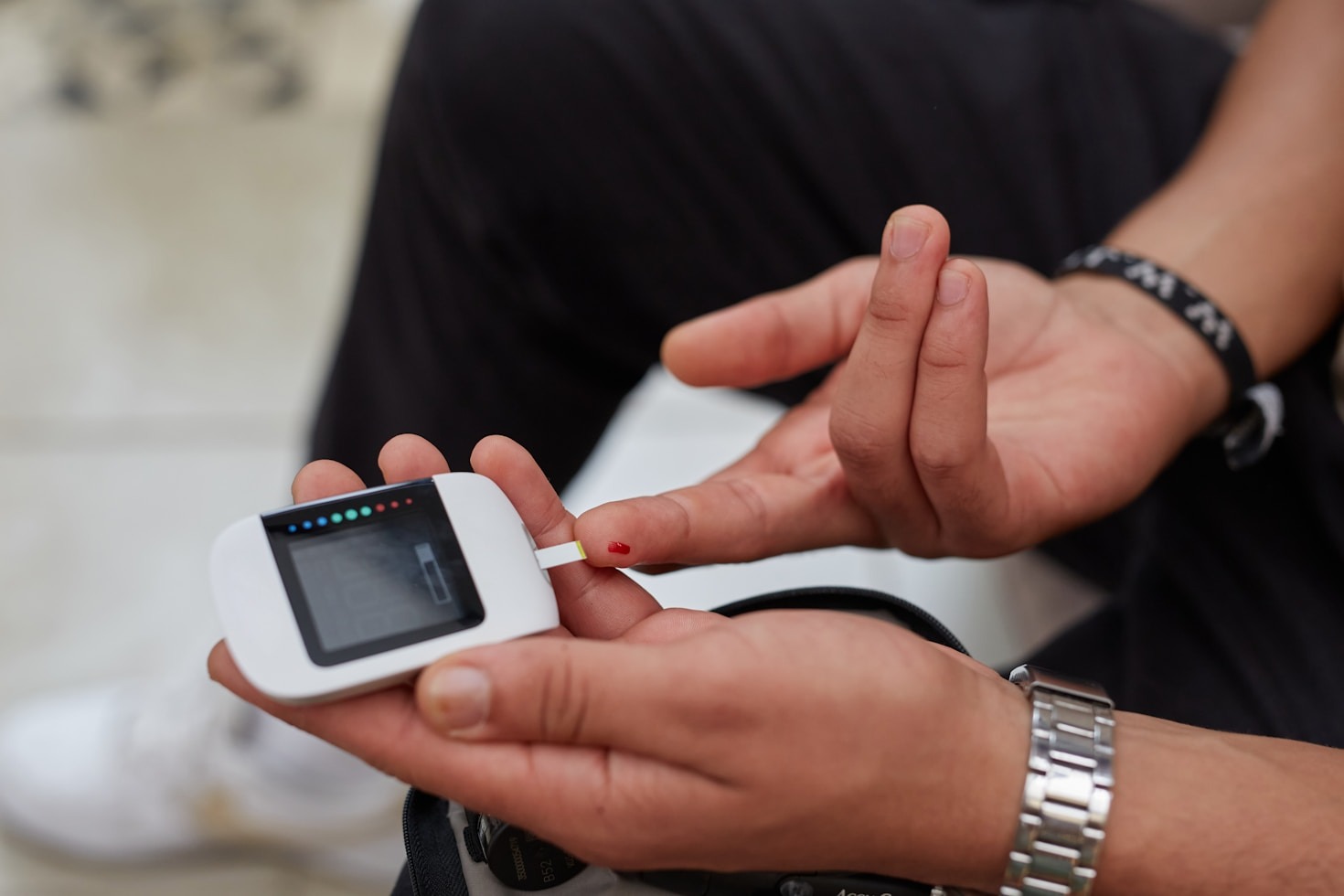Are you feeling overwhelmed by fluctuations in your energy or unexpected cravings? Embracing the right lifestyle adjustments can truly transform your well-being, especially for women over 40 who often face hurdles like fatigue and hormonal changes. Understanding how to maintain stable blood sugar levels can be the key to regaining control over your health and vitality.
Understanding Blood Sugar and Hormonal Changes
As women enter their 40s and beyond, their bodies undergo various changes. One significant change involves hormonal shifts. These changes can influence how our bodies manage blood sugar, leading to feelings of fatigue, mood swings, and weight gain. Blood sugar levels can fluctuate throughout the day, and understanding this is key.
During this phase of life, estrogen levels begin to drop, which can affect insulin sensitivity. Insulin is the hormone responsible for regulating blood sugar. When insulin sensitivity decreases, our bodies may struggle to keep blood sugar levels stable. This can lead to conditions like prediabetes or diabetes, which are more prevalent as we age.
Learning to recognize how different foods, stress, and lifestyle choices affect your blood sugar can empower you. Knowledge is power when it comes to managing your health.
The Role of Nutrition in Blood Sugar Stability
Nutrition plays a vital role in maintaining stable blood sugar levels. Women over 40 often find it helpful to focus on whole foods that provide essential nutrients. This includes:
- Fruits and Vegetables: Colorful fruits and veggies are rich in vitamins, minerals, and fiber which help slow digestion and prevent spikes in blood sugar.
- Whole Grains: Foods like oatmeal, quinoa, and brown rice are excellent sources of slow-releasing carbohydrates that provide sustained energy.
- Healthy Fats: Incorporating sources of healthy fats like avocados, nuts, and olive oil can help maintain satiety and balance blood sugar.
- Protein: Lean proteins, such as chicken, fish, and plant-based options like beans and legumes, are crucial for muscle maintenance and overall health.
Being mindful of portion sizes is equally important. Mindful eating encourages you to pay attention to hunger and fullness cues, preventing overeating and stabilizing blood sugar.
Stress Management Techniques for Daily Life
Stress is a common challenge, especially for busy women juggling multiple responsibilities. Elevated stress levels can lead to higher cortisol, a hormone that impacts blood sugar regulation. Finding ways to manage stress is essential.
Here are some effective techniques:
- Deep Breathing: Simple breathing exercises can lower stress levels and improve focus. Take a moment to inhale for four counts, hold for four counts, and exhale for four counts.
- Yoga and Meditation: Practicing yoga or meditation can be a great way to relax your mind and body. Focus on gentle movements and calming breath.
- Journaling: Writing down your thoughts and feelings can help process emotions and reduce anxiety.
- Time in Nature: Spending time outdoors can reduce stress and boost your mood. Even a short walk can make a difference.
How Exercise Can Transform Your Health
Incorporating regular physical activity is one of the most effective lifestyle adjustments for stabilizing blood sugar. Exercise helps the body use insulin more effectively and can reduce the risk of type 2 diabetes.
Consider these engaging forms of exercise:
- Walking: A simple daily walk can improve your mood and health. Aim for at least 30 minutes a day.
- Strength Training: Building muscle mass through strength training can boost your metabolism and help with blood sugar management.
- Group Classes: Joining dance or fitness classes can make working out more fun and social.
Find activities you enjoy to ensure consistency and enjoyment. Remember, every little bit counts.
Creating a Balanced Meal Plan for Success
Meal planning can simplify your life and support stable blood sugar levels. Start by identifying your favorite healthy foods and plan meals that include a mix of carbohydrates, protein, and fats.
Tips for successful meal planning include:
- Batch Cooking: Prepare meals in advance to save time during the week.
- Simple Recipes: Choose recipes with minimal ingredients to make cooking easier.
- Healthy Snacks: Keep healthy snacks on hand, such as nuts, yogurt, or cut-up vegetables, to avoid unplanned eating.
When you have a plan, it’s easier to make healthier choices throughout the week.
The Importance of Hydration and Its Impact
Staying hydrated is essential for overall wellness and can impact blood sugar levels. Dehydration can lead to elevated blood sugar because your body may retain more glucose.
Make it a goal to drink enough water throughout the day. Here are some helpful tips:
- Carry a Water Bottle: Having a reusable water bottle can remind you to drink more water.
- Flavor Your Water: Add slices of lemon or cucumber for a refreshing twist.
- Track Your Intake: Use apps or journals to monitor your hydration levels and ensure you’re meeting daily goals.
Mindfulness and Its Benefits for Blood Sugar Control
Practicing mindfulness can significantly benefit your health. It encourages being present and aware of your thoughts and feelings without judgment. This practice allows you to make better food choices and recognize emotional eating habits.
Ways to incorporate mindfulness include:
- Mindful Eating: Take time to enjoy each bite and appreciate the flavors and textures.
- Mindfulness Meditation: Set aside time each day to focus on your breath and let go of distractions.
- Gratitude Practices: Reflecting on things you are grateful for can enhance your mood and create positive energy.
Sleep Hygiene: The Forgotten Factor
Quality sleep is often overlooked, yet it plays a crucial role in stabilizing blood sugar. Poor sleep can result in increased cravings, irritability, and difficulty focusing.
Improving sleep hygiene involves:
- Creating a Routine: Go to bed and wake up at the same time every day to establish a healthy circadian rhythm.
- Creating a Comfortable Environment: Ensure your bedroom is dark, cool, and quiet for optimal sleep.
- Limiting Screen Time: Reduce exposure to screens at least an hour before bedtime to improve sleep quality.
Support Systems: Finding Your Tribe
Building a support system can greatly enhance your journey to better health. Surrounding yourself with like-minded individuals helps create accountability and motivation.
Ways to find your tribe include:
- Join Groups: Look for local or online communities focused on health and wellness.
- Attend Workshops: Enroll in health-related workshops or classes that interest you.
- Share Your Journey: Let friends and family know about your goals. Sharing can provide encouragement and understanding.
Motivational Steps Towards Better Health
Embracing change can be daunting, but small, consistent steps can lead to incredible transformation. Start by setting realistic goals and celebrating your achievements, no matter how small.
Remember, everyone’s journey is unique. Stay patient and compassionate with yourself. It is possible to improve your health and navigate the challenges that come with aging. Follow a simple step-by-step method, just as many other women have done. You’re not alone in this journey — seek out support and resources for continuous improvement, and take those inspiring steps towards a balanced life.








